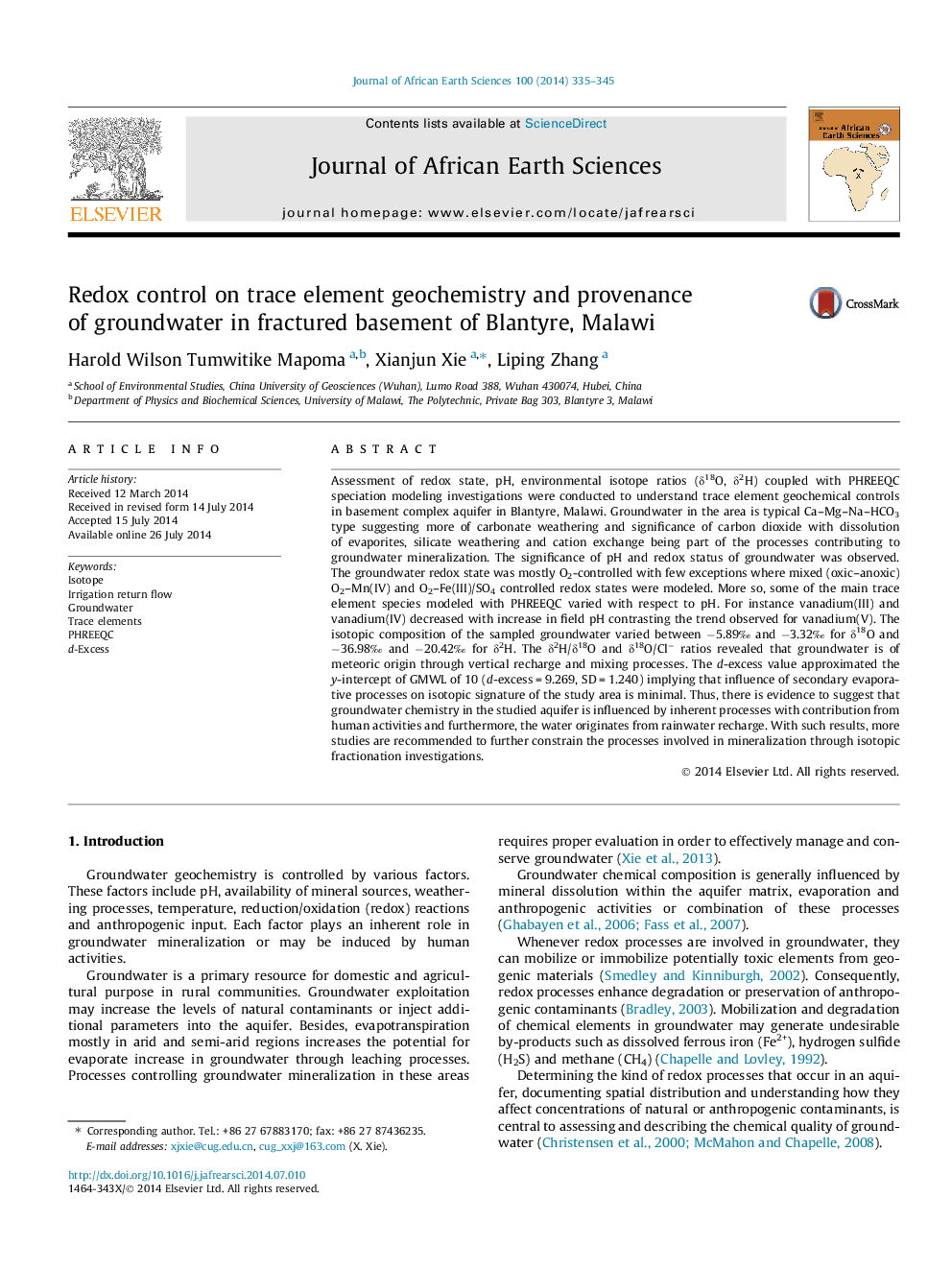| Article ID | Journal | Published Year | Pages | File Type |
|---|---|---|---|---|
| 6443772 | Journal of African Earth Sciences | 2014 | 11 Pages |
Abstract
Assessment of redox state, pH, environmental isotope ratios (δ18O, δ2H) coupled with PHREEQC speciation modeling investigations were conducted to understand trace element geochemical controls in basement complex aquifer in Blantyre, Malawi. Groundwater in the area is typical Ca-Mg-Na-HCO3 type suggesting more of carbonate weathering and significance of carbon dioxide with dissolution of evaporites, silicate weathering and cation exchange being part of the processes contributing to groundwater mineralization. The significance of pH and redox status of groundwater was observed. The groundwater redox state was mostly O2-controlled with few exceptions where mixed (oxic-anoxic) O2-Mn(IV) and O2-Fe(III)/SO4 controlled redox states were modeled. More so, some of the main trace element species modeled with PHREEQC varied with respect to pH. For instance vanadium(III) and vanadium(IV) decreased with increase in field pH contrasting the trend observed for vanadium(V). The isotopic composition of the sampled groundwater varied between â5.89â° and â3.32â° for δ18O and â36.98â° and â20.42â° for δ2H. The δ2H/δ18O and δ18O/Clâ ratios revealed that groundwater is of meteoric origin through vertical recharge and mixing processes. The d-excess value approximated the y-intercept of GMWL of 10 (d-excess = 9.269, SD = 1.240) implying that influence of secondary evaporative processes on isotopic signature of the study area is minimal. Thus, there is evidence to suggest that groundwater chemistry in the studied aquifer is influenced by inherent processes with contribution from human activities and furthermore, the water originates from rainwater recharge. With such results, more studies are recommended to further constrain the processes involved in mineralization through isotopic fractionation investigations.
Related Topics
Physical Sciences and Engineering
Earth and Planetary Sciences
Geology
Authors
Harold Wilson Tumwitike Mapoma, Xianjun Xie, Liping Zhang,
